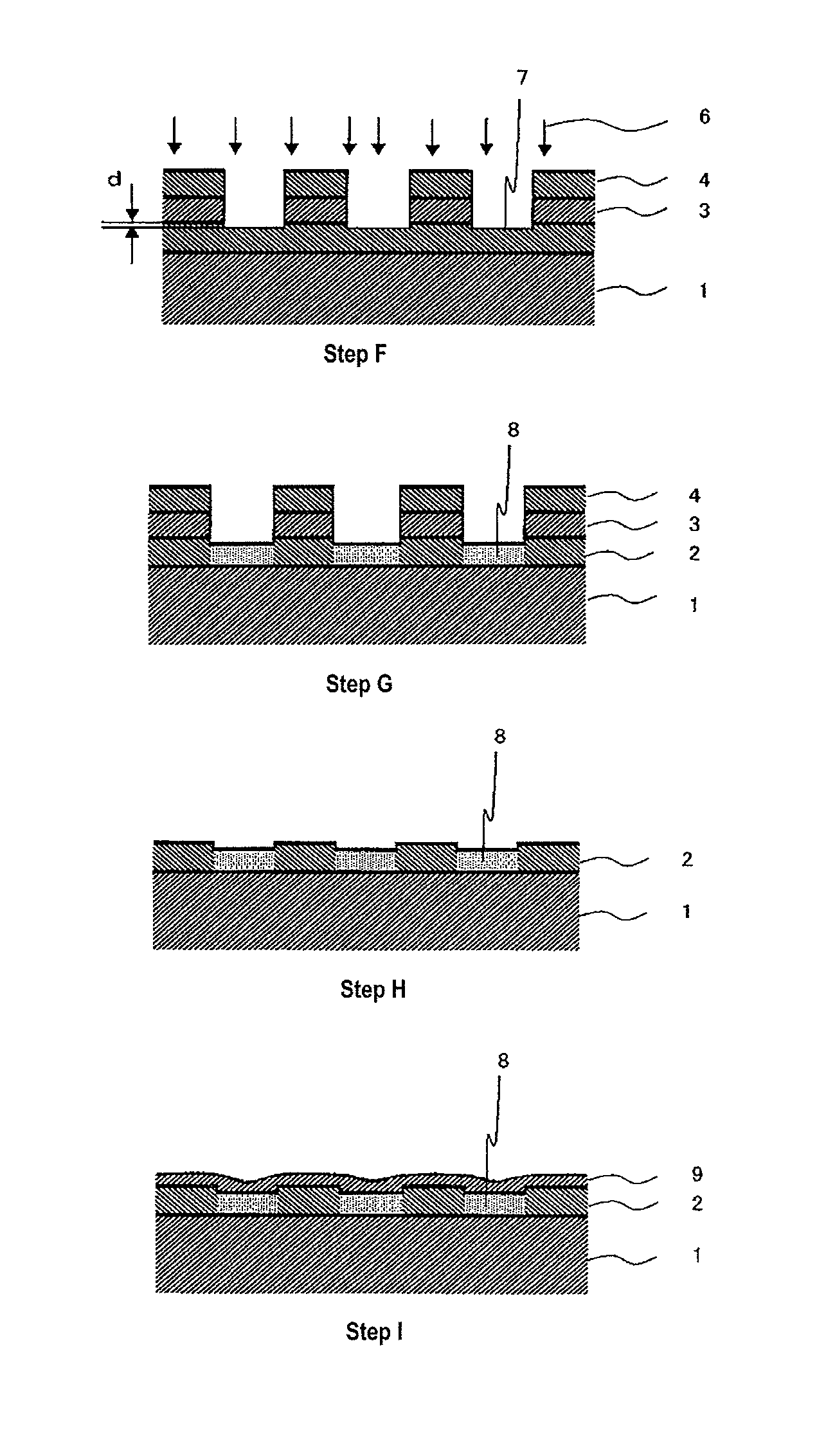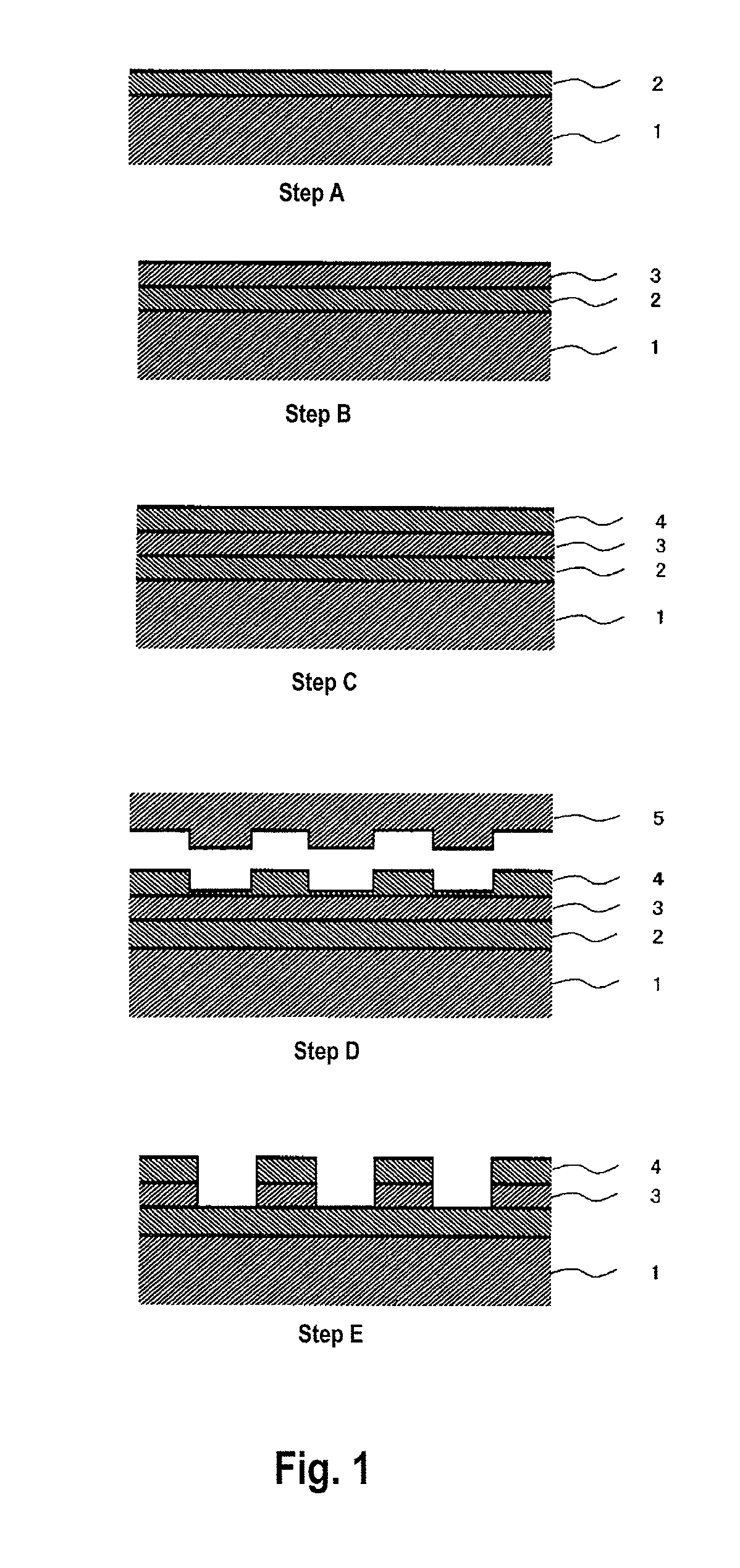Process for making magnetic recording medium and magnetic recording-reproducing apparatus
a recording medium and recording technology, applied in the field of making magnetic recording medium and recording recording apparatus, can solve the problems of reducing the bit error rate, affecting the enhancement of the recording density, and reducing the minimum magnetization volume per bit, etc., to achieve good head-floatability, high recording density, and excellent partitionability
- Summary
- Abstract
- Description
- Claims
- Application Information
AI Technical Summary
Benefits of technology
Problems solved by technology
Method used
Image
Examples
example 1
[0143]A glass substrate for HD was placed in a vacuum chamber and the chamber was vacuumed to a pressure of not higher than 1.0×10−5 Pa to remove the air. The glass plate used is comprised of glass ceramics having a composition of Li2Si2O5, Al2O3—K2O, Al2O3, —K2O, MgO—P2O5 and Sb2O3—ZuO, and has an outer diameter of 65 mm and an inner diameter of 20 mm, and an average surface roughness (Ra) of 2 angstroms.
[0144]On the glass substrate, a soft magnetic layer composed of FeCoB, an intermediate layer composed of Ru and a magnetic layer composed of 70Co-5Cr-15Pt-10SiO2 alloy were formed in this order by DC sputtering. The thicknesses of respective layers are: FeCoB soft magnetic layer: 600 angstroms, Ru intermediate layer: 100 angstroms and magnetic layer: 150 angstroms.
[0145]A masking layer composed of Ta with a thickness of 60 nm was formed on the laminated structure by sputtering. Then a resist layer composed of ultraviolet ray-curable novolak resin with a thickness of 100 nm was form...
examples 2 to 11
[0151]By substantially the same procedures and conditions as employed in Example 1, magnetic recording mediums were made wherein the milling depth of the magnetic layer (i.e., the thickness of the removed surface layer portions of the magnetic layer) was changed as shown in Table 1, below. All other conditions remained the same. The making conditions employed are shown in Table 1.
PUM
| Property | Measurement | Unit |
|---|---|---|
| thickness | aaaaa | aaaaa |
| Ra | aaaaa | aaaaa |
| Ra | aaaaa | aaaaa |
Abstract
Description
Claims
Application Information
 Login to View More
Login to View More - R&D
- Intellectual Property
- Life Sciences
- Materials
- Tech Scout
- Unparalleled Data Quality
- Higher Quality Content
- 60% Fewer Hallucinations
Browse by: Latest US Patents, China's latest patents, Technical Efficacy Thesaurus, Application Domain, Technology Topic, Popular Technical Reports.
© 2025 PatSnap. All rights reserved.Legal|Privacy policy|Modern Slavery Act Transparency Statement|Sitemap|About US| Contact US: help@patsnap.com



